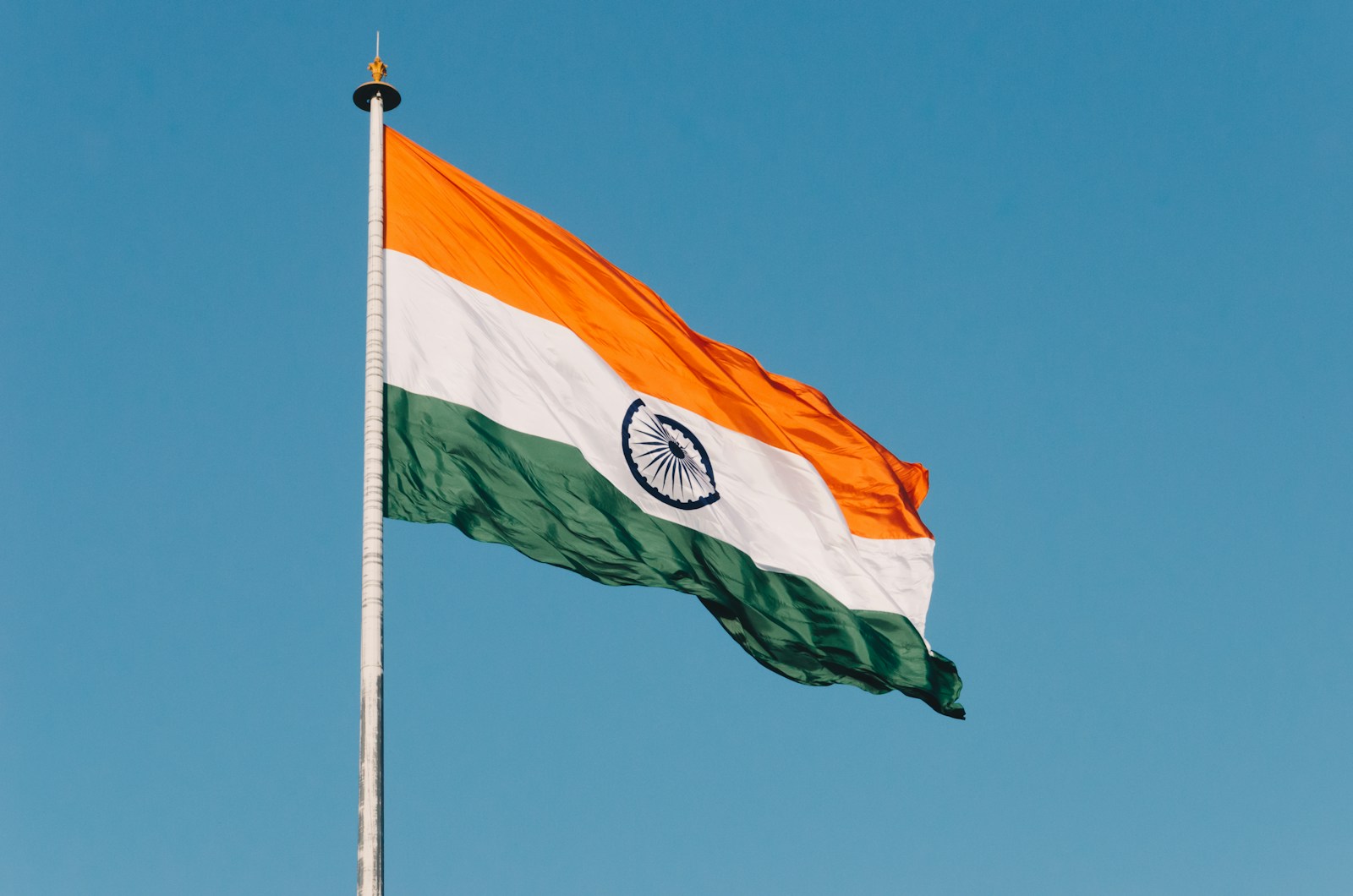Many things make a country unique. There are obvious ones, such as the food, language, and traditions of a people. India has a vast wealth of cultural heritage that reflects the identity of its people. Well-curated symbols such as the India flag hold great meaning that tell who Indians are.
India has 17 national symbols. This article will explore some of these symbols and their meanings for the nation.
1. The National Flag
The Indian national flag, designed by Pingali Venkayya, has three colors. These colors are laid in three horizontal, rectangular bands of equal width. The top band color is saffron. Next is a central white band with a navy blue wheel (the Ashoka Chakra) at its center. The last band’s color is green.
- The saffron color represents the sacrifice and courage of the country.
- The white is symbolic of purity, peace, and truth.
- Green represents faith, fertility, and growth.
- The Ashoka Chakra is symbolic of motion and growth as it has 24 spokes representing 24 hours in a day.
2. The National Anthem
The national anthem of India, Jana Gana Mana, was originally written in Bengali. Composed by Rabindranath Tagore in 1911, its Hindi version was adopted as the National Anthem in 1950. The anthem calls to the diverse groups in India. It also appreciates the landscape of the country, from the hills to the Indian sea. The Jana Gana Mana is short, with play finishing in 52 seconds.
3. The National Emblem
The national emblem of India symbolizes power, confidence, courage, and pride. It is an emblem of the Lion Capital of Ashoka (a sculpture found at Sarnath). The emblem shows four lions standing back to back. These lions rest on a circular abacus with sculptures of an elephant, a horse, a bull, and a lion on it. The national emblem appears in official documents and government buildings.
4. The National Flower
The lotus is the national flower of India. It is revered for its place in Indian mythology as it’s the flower of the goddess Lakshmi. The flower also holds significance in Hinduism and Buddhism religions practiced in India. The lotus is symbolic of purity, beauty, and good fortune.
5. The National Bird
The Indian peacock is the national bird of India. Announced as the national bird in 1963, it symbolizes the grace and beauty of the Indian cultural heritage. The peacock makes many appearances in Indian traditions. India is the only country with the peacock as its national bird.
Other National Symbols of India Include:
- The Royal Bengal tiger represents strength and power. Its choice as India’s national animal emphasizes the wildlife richness of India. It also represents the wildlife preservation efforts to protect the tiger population in India.
- The Banyan tree, India’s national tree, signifies longevity and the unity of India because of its deep roots and expansive branches.
- The Ganges is India’s national river. Revered for its sacredness, it embodies spiritual purity and well-being.
- The Ganges river dolphin is the national aquatic animal.
- The Indian elephant is the national heritage animal of India.







